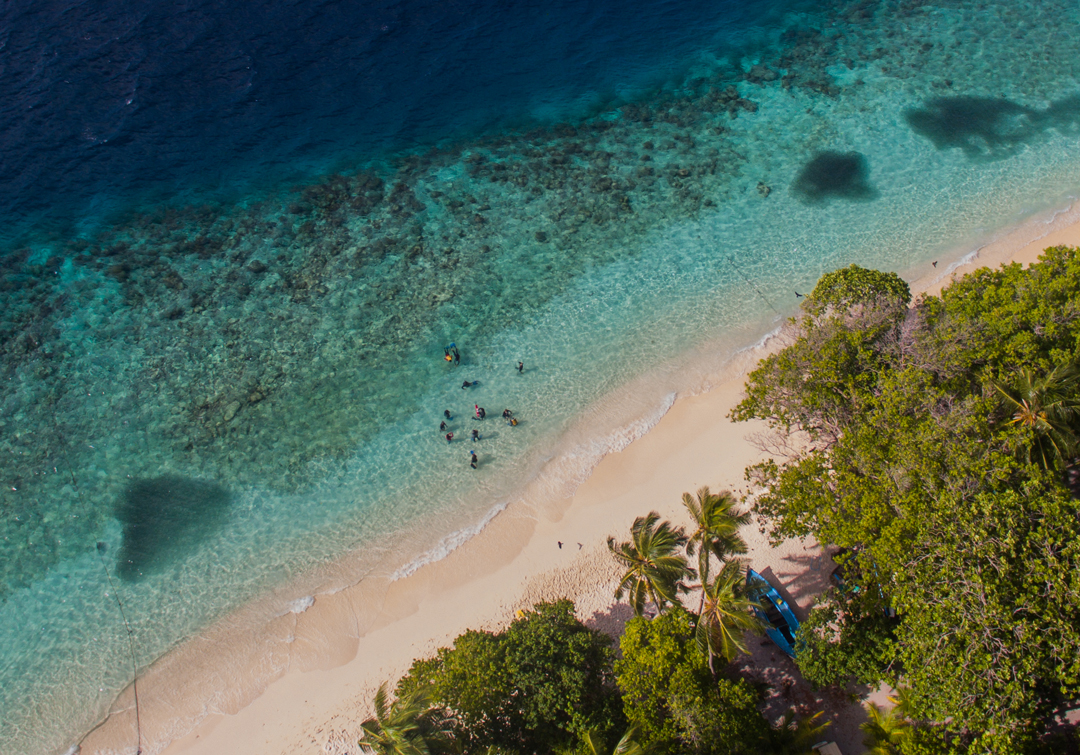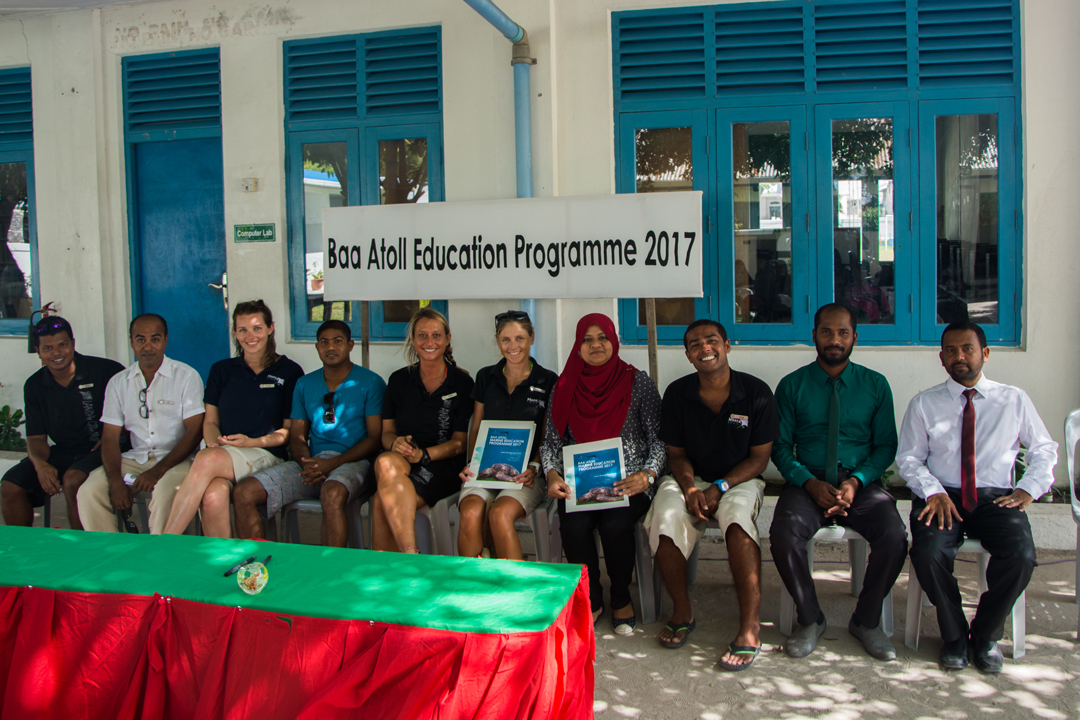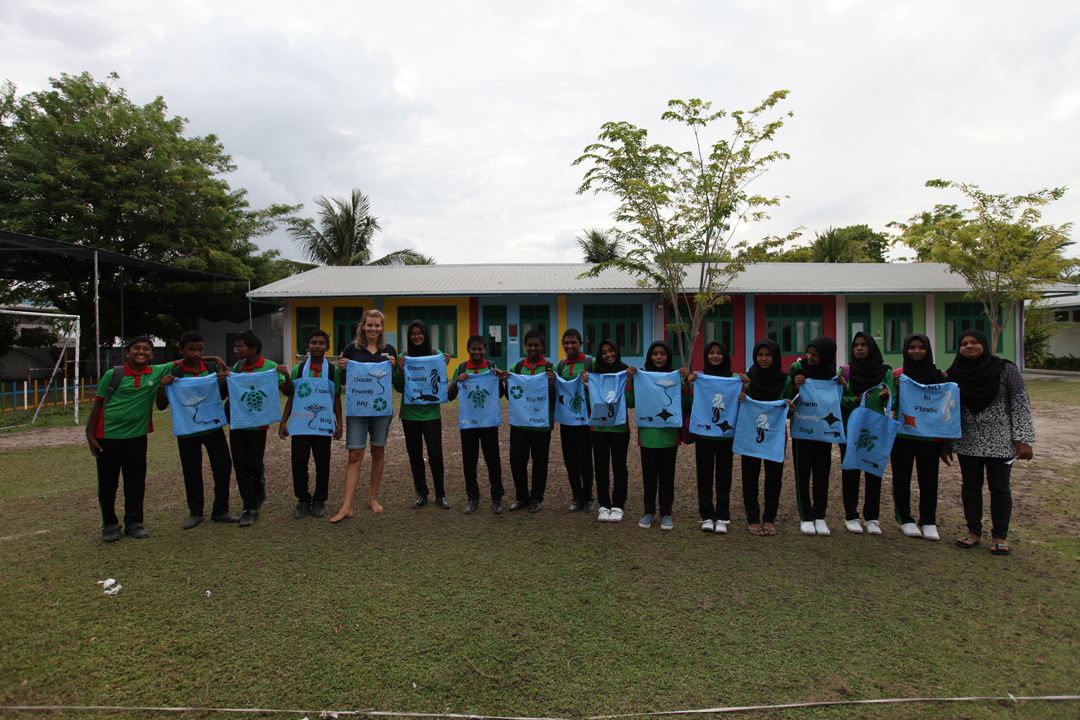Marine Education in the Maldives: Getting Girls in the Ocean! Part 1
As part of my MSc in Marine Environmental Management, I completed a placement with the Manta Trust in the Maldives, where I helped to implement a marine environmental education program for twenty-three Maldivian secondary school students. With an undergraduate background in ‘Childhood and Disability’ and a huge passion to change my career to marine conservation, this was my dream project… to work with kids, and the sea, and to get kids in the sea!

The students are taught to snorkel during inauguration day. Photo by Simon Hilbourne | © Manta Trust
The Maldives relies heavily on healthy marine biodiversity, which is poorly protected and increasingly vulnerable to anthropogenic and climate-change associated threats. Incorporating environmental education at school is a key way to develop environmentally aware individuals that can mitigate environmental issues and assist sustainable development. Many schools in the Maldives do not offer environmental education beyond primary school. We hoped that our programme could positively affect marine environmental awareness, engagement, knowledge and attitudes.

The Manta Trust team introduce the Baa Atoll Marine Education Program to students and parents alongside school teachers. Photo by Simon Hilbourne | © Manta Trust
The programme was conducted between June and November 2017 and supported by the Manta Trust and Four Seasons Landaa Giraavaru. The program involved six core modules designed to increase student’s knowledge about the marine environment, threats to the marine environment, and conservation strategies. We focused on providing field experience to deepen theory learning and ensure students got to witness the beauty of the marine environment first-hand. We also provided snorkelling lessons, which proved especially valuable for the female students, who were not confident swimmers… more on this later.

After learning about waste management issues, students printed their own recycled, reusable shopping bags. Photo by Adam Thol'Hath | © Manta Trust
Field trips included snorkelling on coral reefs and with turtles, visiting Soneva Fushi’s Eco-Centre, and the highlight – snorkelling with manta rays in the revered Hanifaru Bay! During the southwest monsoon in the Maldives, Hanifaru Bay, an integral part of the Baa Atoll Biosphere Reserve, see’s the world’s largest aggregation of reef manta rays. The kids were extremely excited for this trip after hearing about our research experiences in the bay, and the majestic mantas did not disappoint! Although we did not get a large feeding aggregation, and despite a broken-down boat and seasickness, we got to experience four mantas gliding below our feet with all twenty-three students screaming in excitement! We were incredibly proud that the students, especially the girls, had gone from fearing the sea and struggling to snorkel to swimming with manta rays within two months.
Children on the Maldives Education Programme put their new snorkel skills to use and share the water with four manta rays. Video by Flossy Barraud | © Manta Trust
So why were the Maldivian girls less confident in the water than their fellow, male students? Find out in part two.
